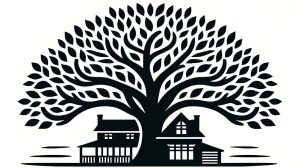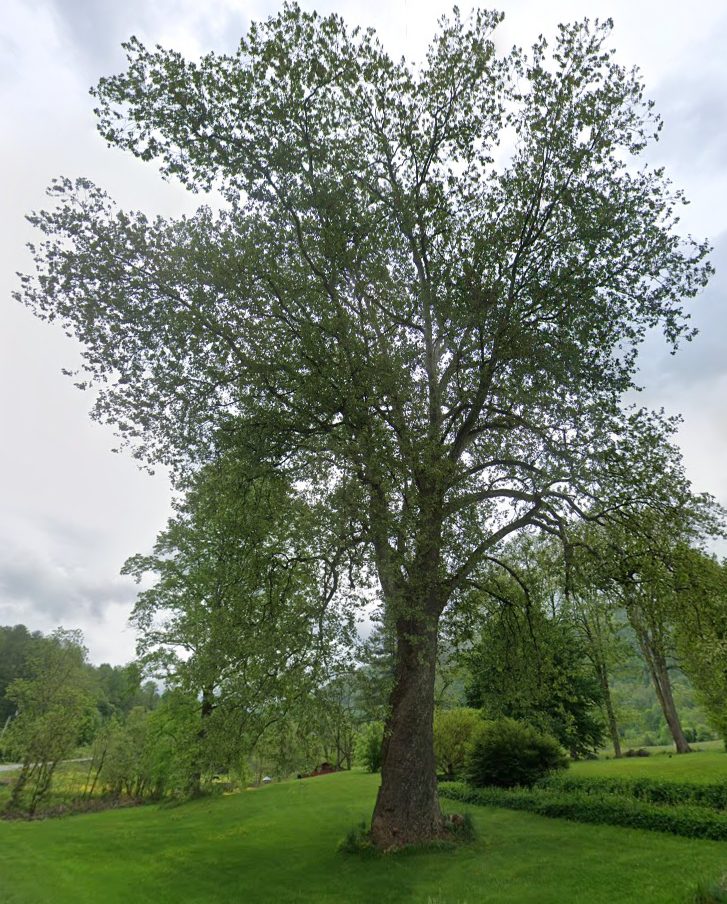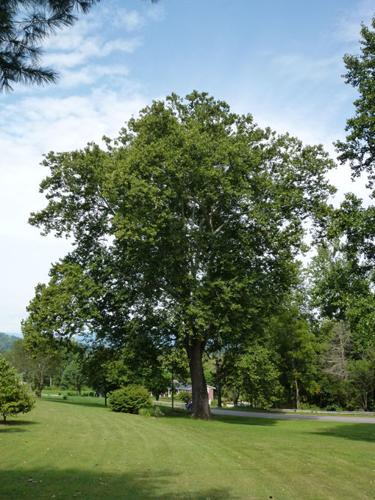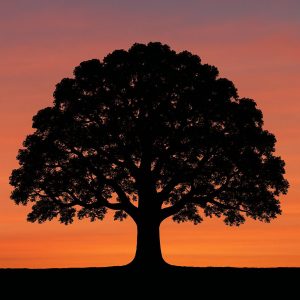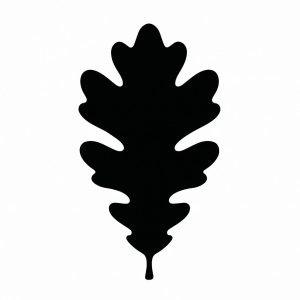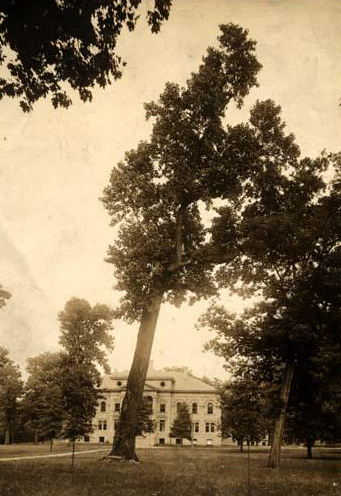Most suburban sycamores reach 100 to 120 feet tall. Their trunks rarely exceed 15 feet in circumference. The Francis Cove specimen beats both measurements by a wide margin. Its height and girth combine to give it the largest known volume of any sycamore in North Carolina.
In Francis Cove near Waynesville, a tree rises more than 130 feet into the sky. It is the tallest and thickest American sycamore in the state. The Eastern Native Tree Society officially recognized it as the largest in North Carolina. Estimated to be over 320 years old, it stands as one of the oldest living trees in the region.
This tree began growing around the year 1700. At that time, this part of Western North Carolina was Cherokee land. When Daniel Boone explored the area in the 1760s, the tree was already established. By the time the first settlers arrived in Haywood County in the 1790s, it had been growing for nearly a century.
The site’s deep soil and steady groundwater helped the tree reach this size. Property owner Hettie Casey remembers a sulfur spring once flowed nearby. That steady water source likely gave the sycamore minerals and moisture throughout its life.
In 2004, arborist Will Blozan measured the tree. He returned in 2011 and found it still growing. At that point, it stood 132.5 feet tall and measured 268 inches (22.3 feet) around at 4.5 feet off the ground. That was 1.3 feet taller and 8 inches wider than in 2004.
Most sycamores in towns or backyards never reach these numbers. They often face root damage, dry soil, and tight spaces. This tree’s location gave it everything it needed: moisture, soil depth, and room to grow.
The tree is not without scars. A lightning strike carved a spiral wound down its trunk. One large wound may cause it to hollow with time. That’s common for trees of this age. It does not mean the tree is dying.
The Casey family has owned the land around the tree since the 1980s. But their history with the tree goes further back. Hettie’s mother played near it in the 1920s. Hettie recalls working in the field beside it and eating lunch under its shade.
The tree stands just a few feet from U.S. Highway 276. Drivers often notice it. Many have crashed into it. Hettie says she has lost count of the number of cars that hit the tree’s base over the years. Despite the collisions, the tree has always healed.
Sycamores are tough. Their thick bark protects their growing tissue. Their cells can seal off wounds. That’s how this tree has survived both natural damage and human impact.
Blozan continues to track the tree’s condition. As president of the Eastern Native Tree Society, he documents record-setting trees. He uses this data to better understand how old trees age, heal, and respond to stress.
For property owners, the Francis Cove sycamore shows what’s possible. Trees can live for centuries with the right conditions and care. The key is space, water, and protection from damage. Homeowners should avoid paving over roots, compacting soil, or pruning improperly. When storms or injury happen, a qualified arborist should check the tree.
The tree also shows the value of long-term care. The Casey family never saw the tree as a problem. They gave it room to grow. They never cut it back. In return, the tree became a local landmark.
Today, big trees like this are rare. Climate shifts, disease, and land use changes have removed many old trees from the landscape. The Francis Cove sycamore remains. Its size, age, and resilience make it one of the most important trees in the state.
For drivers headed into Waynesville on Pigeon Rd (276), it’s worth slowing down. A few feet from the road stands a living piece of Appalachian history. With continued care, it may still be standing 100 years from now.
